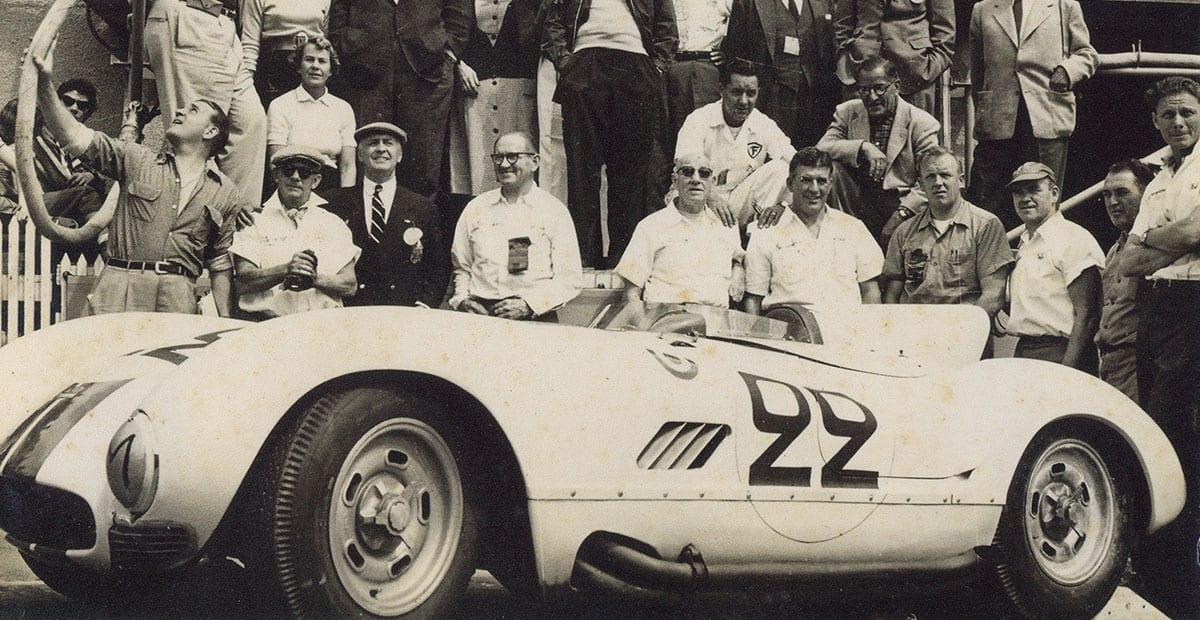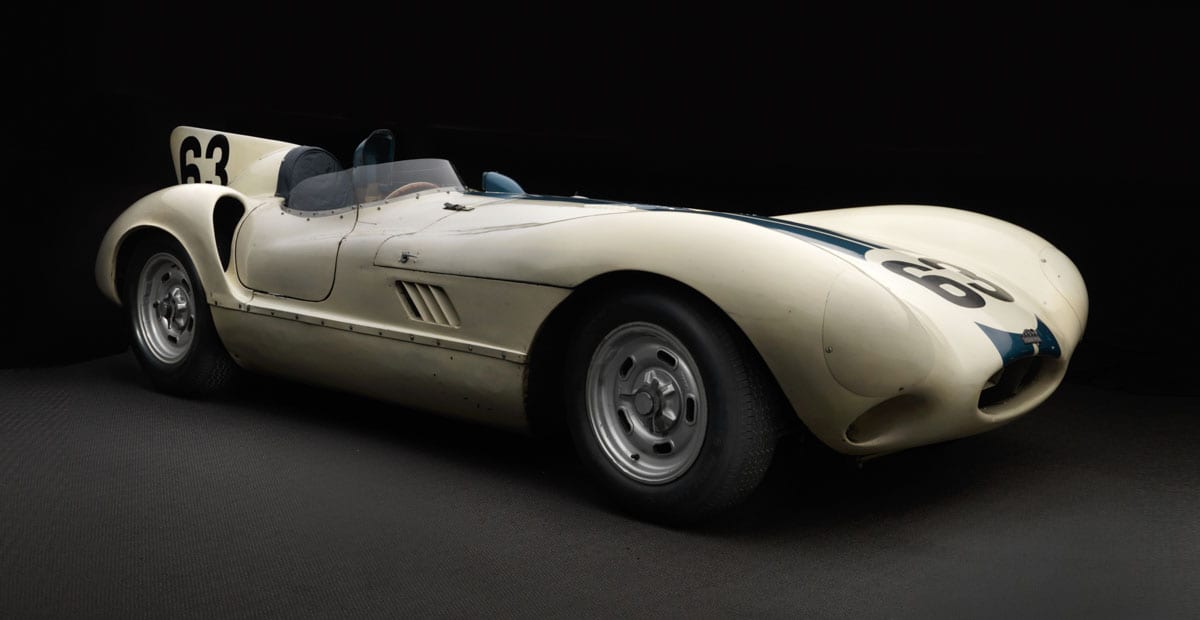Tech Specs
Current Engine: bored-out 3.8-liter Jaguar D-Type. Original Engine: four-cylinder, in-line Meyer-Drake Offenhauser, 179 cubic inches (2942 cc).
Before/After
1955 Cunningham


About the 1955 Cunningham C-6R
The C-6R was Briggs Cunningham’s last valiant attempt to beat the Europeans at Le Mans. After four years of trying with the big Chrysler V-8 hemi, Briggs switched to Offenhauser power – four cylinders, three liters, sixteen valves, double overhead cams. American racing journalists had suggested this earlier, but they didn’t know how hard it would be. Briggs found out.
Making a sports car competition engine out of an Indy unit meant modifying it to burn gasoline instead of methanol. Development at West Palm Beach was interspersed with frequent telephone calls to Leo Goossen, chief designer of Meyer-Drake, the engine manufacturer. The Indy-fitted Hilborn injection had brought 220 hp. Double-barrel Weber carburetion increased horsepower to 270 but, alas, on pump gas the engine never ran cool enough. At Le Mans in 1955, Briggs teamed with Sherwood Johnston in the C-6R. Its fastest lap was only 106 mph, while its maximum timed speed was 13 mph slower than the C-5R had been the year previous. A burned piston retired the car after 202 laps. At Elkhart Lake a few months later, the Offy engine failed again and was replaced by a Jaguar unit, since by now Briggs had given up his Cunningham effort and was leading the D-Type competition program in the U.S.
Meanwhile the venerable Cunningham C-4R had raced on. In 1954 the two-year-old cars finished 3rd and 5th at Le Mans; and Phil Walters won Watkins Glen amidst a field of 4.5 Ferraris. “Remarkable,” the press said. Remarkable, too, was Charlie Moran’s Cunningham campaign with a C-4R, the C-4RK and C-5R in which he won the B-Modified championship in 1955.
Closing up shop at West Palm Beach was difficult for Briggs, but the tax laws gave him no choice. Nevertheless, with “one rather fragile dynamometer” (in John Fitch’s words), a crew of 40 men, the back roads of Florida for a test track and considerable quantities of his own money, Briggs Cunningham had proven that America could be a contender in international sports car racing. One man’s dedication, enthusiasm and resources had come very close to winning Le Mans. A decade later, it would take Henry Ford II’s total commitment of Ford Motor Company’s might to succeed.
Photos – Peter Harholdt














